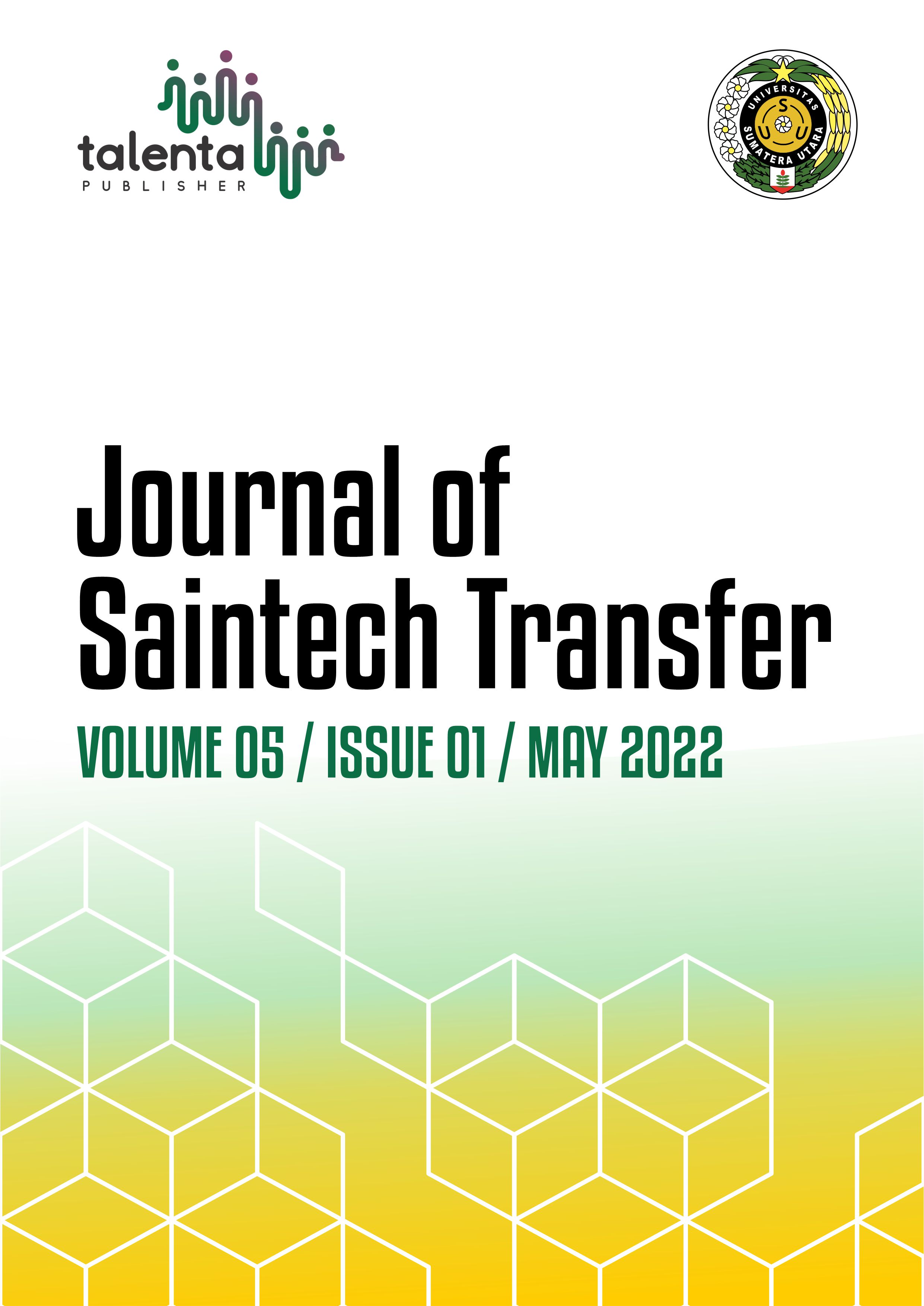Eco-Enzyme Applications for Biosecurity and Sanitation on Goat Farm in Namorambe District, Deli Serdang Regency
DOI:
https://doi.org/10.32734/jst.v5i1.8850Keywords:
Eco-Enzime, Goat Farm, Biosecurity, Sanitation, WasteAbstract
Deli Serdang is a district that has the highest population of sheep and goats. The maintenance system is in the semi-intensive category so it can be categorized as an animal husbandry livelihood. An independent livestock business namely Al-Hafidz sheep and goat farming is located in Sidirejo Village, Namorambe District, Deli Serdang Regency. Problems in the Al-Hafidz farmer group are the decline in livestock health and poor sanitation of the cage. This problem can affect the health of livestock, especially skin diseases and can be transmitted to the breeder. The purpose of this community service activity is to improve biosecurity and cage sanitation using eco enzymes. Activities are carried out by making natural disinfectants that are easy and do not require expensive costs, such as eco-enzymes. Kitchen waste can be used as an ingredient to make Eco-Enzymes. Eco Enzyme is very useful as an insect repellent, house cleaning flies and equipment, insecticide, an antiseptic or natural antibacterial. The methods used are training, counseling, and assistance to farmer groups. The results achieved are increased knowledge of farmers regarding the manufacture of eco-enzymes as cage biosecurity by utilizing fruit peel waste, reducing household waste pollution, and reducing the cost of purchasing disinfectants.
Downloads
References
Badan Pusat Statistik. 2018. “Deli Serdang Dalam Angka†[Deli Serdang in Numbers] Badan Pusat Statistik Indonesia
R. Zuroida and Azizah R. “Cages Sanitation and Health Complaints Among Dairy Farmers in Murukan Village, Jombangâ€. Jurnal Kesehatan Lingkungan, Vol.10 , No.4, pp 434-440. 2018
Y. N. Chandra, C. Dewi Hartati, G. wijayanti, H. G. Gunawan. “Sosialisasi Pemanfaatan Limbah Organik Menjadi Bahan Pembersih Rumah Tangga†[Socialization of the Utilization of Organic Waste into Household Cleaning Materials] Prosiding Seminar Nasional Pengabdian kepada Masyarakat 2020 (SNPPM-2020)
U. I. S Megah, D. Surlitasari, E. Wilany. “Pemanfaatan Limbah RumahTangga Digunakan Untuk Obat dan Kebersihan†[Utilization of Household Waste Used for Medicine and Hygiene] Minda Baharu, Vol. 2 No. 1: 20-58. 2018
Mavani, H. A. Kuman. “Antimicrobial Efficacy of Fruit Peels Eco EnzymemAgaist Enterococcus Faecalis: An In Vitro Studyâ€. International Journal of Environmental Research and Public Health. 15 July 2020.
A. Winata, S. Cacik, S. Mizan, “Pelatihan Pembuatan Garbage Enzime di Desa Grabagan†[Garbage Enzyme Making Training in Grabagan Village] Proseding Seminar Naional Unirow Tuban. pp 140-145 2017
F. E. Tang and C. W Tong, “A Study of the Garbage Enzyme‟s Effects in Domestic Wastewater†World Academy of Science, Engineering and Technology, Vol. 60 pp 143 (2011)
P. Patriani, E. S Nasution, U. Hasanah, “Application of Liquid Organic Fertilizer from Beef Cattle Feces and Environmental Management in Suka Sipilihen, Karo Regency†Journal of Saintech Transfer (JST) Vol. 4, No. 1, pp 1-9. 2021
Hasnudi, P. Patriani, G. A. W. Siregar, and S. Umar “Utilization of Kepok Banana Peel Waste Fermented Using EM4 as Sheep Feed in Medan Tuntungan Sub District.†Journal of Saintech Transfer (JST) Vol. 2, No. 2, pp. 142-149. 2019
I. Sembiring and P. Patriani, “Livestock marketing strategies in the Tandam Hilir II Village Deli Serdang Districtâ€. Abdimas Talenta Vol. 5, No. 2. pp: 401-408, 2020
P. Patriani, E. Mirwandhono, U. Hasanah, N. Ginting. "Coffee Seed Waste silage technology as goat feed in Tigapanah Sub-district, Karo regency." Journal of Saintech Transfer (JST). Vol. 3. No. 2, pp. 77-85, 2020.
Downloads
Published
How to Cite
Issue
Section
License
Copyright (c) 2022 Journal of Saintech Transfer

This work is licensed under a Creative Commons Attribution-ShareAlike 4.0 International License.















